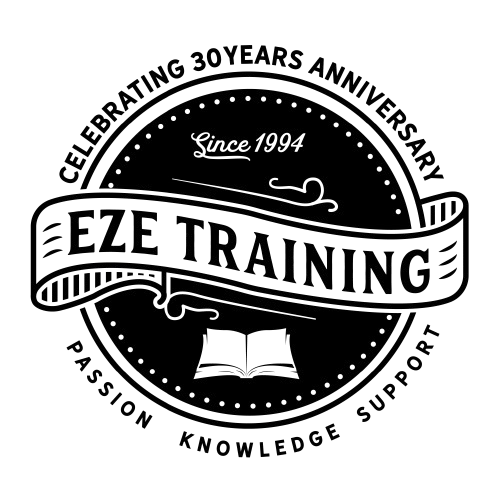The Hazards You Don’t See Coming
When most people think of workplace hazards, their minds jump to obvious dangers: heavy machinery, wet floors, or handling chemicals. These are real risks, but they’re also the ones safety briefings tend to cover in detail.
The reality? Many serious incidents don’t happen because of the big, visible threats. They happen because of the smaller, less dramatic hazards, the ones that hide in the routines, and in assumptions, slipping under the radar until it’s too late.
And these hazards aren’t just physical. Your body isn’t the only thing at risk, your mental health and biological safety are just as vulnerable. Left unaddressed, these hidden dangers can wear away wellbeing, productivity, and even the long-term capability of a business.
1. The Growing Strain of Poor Ergonomics (Physical Hazard)

What It Is
Ergonomics is about designing workstations, tools, and tasks to fit the worker, not forcing the worker to contort to the equipment. Poor ergonomics leads to musculoskeletal disorders (MSDs), repetitive strain injuries (RSIs), and chronic pain.
Why It’s Overlooked
Because it’s a slow burn. You don’t wake up one day with a sudden “ergonomic injury.” Instead, you develop tension, stiffness, or tingling over weeks, months, or years until it becomes a debilitating condition. By the time it’s recognised as a workplace injury, the damage is often well advanced.
Real-World Example
- An office administrator develops carpal tunnel syndrome after years of working with a poorly positioned keyboard.
- A warehouse picker experiences chronic shoulder pain from lifting boxes from floor level to overhead shelves without mechanical assistance.
Spotting It Early
- Are employees leaning forward to read screens?
- Do they frequently rub wrists, necks, or lower backs during the day?
- Is there high turnover in physically repetitive roles?
Prevention & Mitigation
- Provide adjustable chairs, desks, and monitor stands.
- Rotate repetitive tasks to limit strain.
- Train staff in safe lifting and neutral posture techniques.
- Conduct regular ergonomic audits — don’t wait for someone to complain.
Key Takeaway: An ergonomic hazard isn’t about a single accident, it’s about the thousands of micro-strains that quietly add up to a major injury.
2. Silent Mental Health Erosion (Mental Hazard)

What It Is
Workplace mental health hazards include chronic stress, unrealistic workloads, unclear expectations, lack of support, and toxic work cultures.
Why It’s Overlooked
Mental health often isn’t viewed as a “safety” issue, yet the ripple effects of poor mental wellbeing can be as dangerous as a broken machine. Stress and burnout increase the risk of physical accidents, absenteeism, and high turnover.
Real-World Example
- A project team is given impossible deadlines without additional resources. Within months, staff are exhausted, morale is tanking, and mistakes are increasing that then lead to costly rework and strained client relationships.
- A high-performing employee hides their anxiety until they experience a panic attack at work, forcing an emergency absence.
Spotting It Early
- Rising sick leave without a clear cause.
- Increased conflict between colleagues.
- Withdrawal from team activities or sudden drops in productivity.
- Higher-than-normal staff turnover in certain departments.
Prevention & Mitigation
- Create clear job roles and expectations.
- Ensure reasonable workloads and allow recovery time.
- Provide mental health resources — Employee Assistance Programs (EAPs), counselling, or mindfulness training.
- Encourage open, stigma-free conversations about mental health.
Key Takeaway: A mentally unsafe workplace is just as hazardous as a physically unsafe one — but the damage is often hidden behind a smile.
3. Poor Indoor Air Quality (Biological & Physical Hazard)

What It Is
Indoor air can be contaminated with dust, mould, chemical fumes, and biological pathogens. Poor ventilation allows pollutants to build up, leading to “sick building syndrome” and respiratory issues.
Why It’s Overlooked
Air is invisible and as long as people aren’t visibly coughing, many assume it’s fine. But symptoms like headaches, fatigue, or itchy eyes are often brushed off as unrelated or “just part of the job.”
Real-World Example
- An open-plan office with old carpeting harbours dust mites and mould spores. Staff complain of congestion and low energy.
- A factory uses solvents without adequate ventilation, leading to chronic headaches among workers.
Spotting It Early
- Frequent complaints of headaches or respiratory irritation.
- Musty smells or visible mould growth.
- Humidity that feels persistently high or low.
- Increase in sick leave during certain seasons.
Prevention & Mitigation
- Maintain HVAC systems and replace filters regularly.
- Introduce plants known for improving air quality.
- Conduct regular air quality testing, especially in high-risk environments.
- Store chemicals safely and ensure proper ventilation when in use.
Key Takeaway: The air you can’t see could be doing more damage than the hazards you can.
4. Inadequate Training for Low-Risk Tasks (Physical & Mental Hazard)

What It Is
Tasks perceived as “low-risk”, such as using a step ladder, carrying light loads, or basic computer work. These often receive minimal safety training. But familiarity breeds complacency, and complacency invites accidents.
Why It’s Overlooked
If no one’s been hurt yet, management may assume the task is inherently safe. Over time, bad habits creep in and go uncorrected.
Real-World Example
- A retail worker uses a step ladder to change signage without securing it - they fall and suffer a concussion.
- An employee with “just a desk job” develops a severe RSI because they never learned proper keyboard positioning.
Spotting It Early
- Workers improvising equipment use.
- Safety procedures skipped because they’re seen as unnecessary.
- New employees copying unsafe behaviours from veterans.
Prevention & Mitigation
- Refresh training for all tasks, no matter how routine.
- Encourage peer-to-peer safety coaching.
- Keep safety guidelines visible and practical, not buried in a manual.
- Conduct micro-training sessions for 5–10 minutes during team meetings.
Key Takeaway: The tasks that seem safest can cause the most overlooked injuries when training is absent.
5. Pathogens in Shared Spaces (Biological Hazard)

What It Is
Workplaces can be breeding grounds for viruses, bacteria, and other pathogens, especially in shared kitchens, bathrooms, and high-touch surfaces like door handles or shared equipment.
Why It’s Overlooked
Illness transmission is often considered a “personal health” issue, not a workplace safety issue. But one sick employee can quickly lead to a wave of absenteeism, disrupting operations.
Real-World Example
- A call centre experiences a flu outbreak after multiple staff share headsets without cleaning them.
- A warehouse team uses shared gloves for handling materials; several workers develop skin infections.
Spotting It Early
- Clusters of similar illnesses appearing in the same department.
- High-touch areas rarely cleaned.
- Lack of visible hygiene facilities (hand sanitiser, soap, paper towels).
Prevention & Mitigation
- Implement regular cleaning protocols for shared equipment.
- Provide accessible hygiene stations.
- Encourage sick employees to stay home without penalty.
- Educate staff on how pathogens spread in the workplace.
Key Takeaway: Preventing illness isn’t just about being considerate — it’s a strategic move to keep operations running.
The Role of Awareness in Prevention

Each of these hazards, ergonomic strain, mental health erosion, poor air quality, low-risk task complacency, and pathogen spread, have one thing in common: they thrive in environments where people aren’t paying attention.
Awareness doesn’t happen by accident. It’s cultivated through:
- Regular, honest assessments of workplace conditions.
- Empowering employees to speak up without fear.
- Actively looking for early warning signs before they become incidents.
When a workplace builds awareness into its culture, hazard prevention stops being a “compliance checklist” and becomes a daily habit.
The hazards you overlook are often the ones most likely to catch you off guard. Physical, mental, and biological risks all have the potential to harm people and productivity, but with awareness, they can be identified and neutralised before they escalate.
Investing in prevention isn’t just about avoiding fines or injuries. It’s about creating a workplace where people can perform at their best, knowing their wellbeing is valued and protected. And in today’s fast-paced world, that’s not just a safety measure, it’s a competitive advantage.



